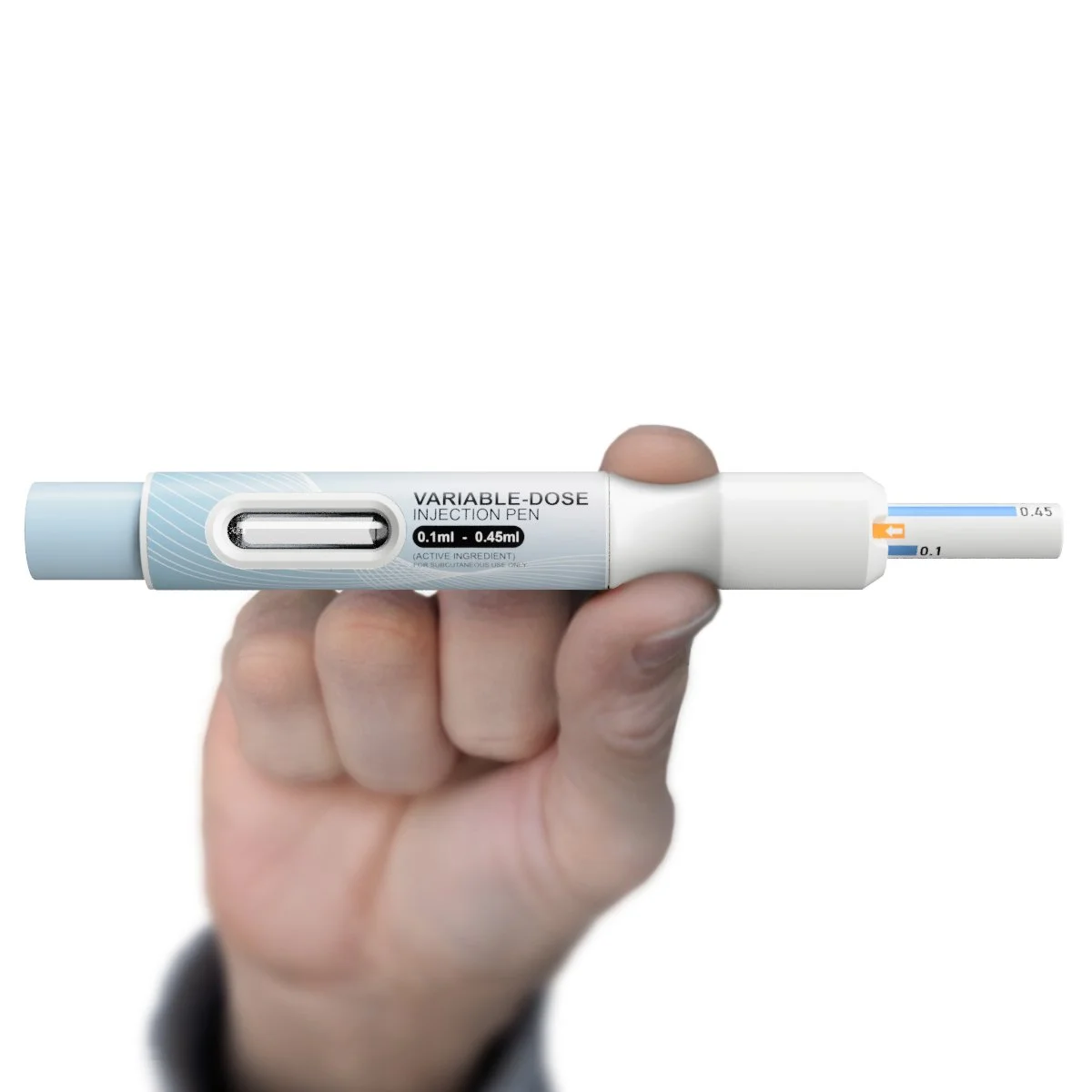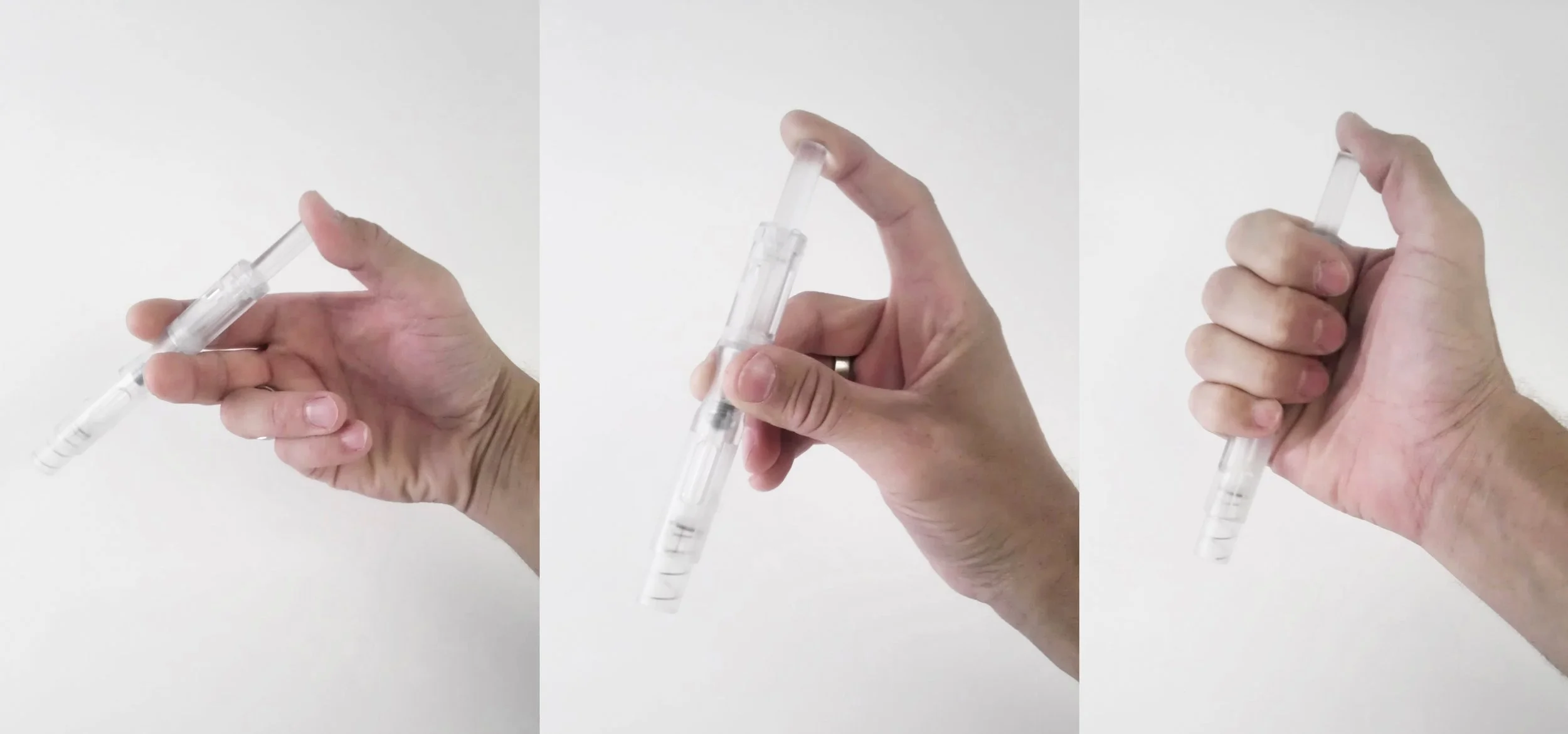
Case Study:
Variable Dose Injector
-Human-Centered Design for Pediatric Patients
Industrial Design & Human Factors
Overview:
Administering injections to children requires more than just a functional device - it demands empathy, clarity, and trust. We designed a single-use variable dose injector that reduces fear, supports accurate dosing, and empowers both young patients and their caregivers.
Approach:
-Putting users at the center of every decision
A simple, single-use variable dose injection device for use with prefilled syringes and cartridges. Simply prime, dial the dose, and inject. The retractable needle sheild hides the needle before injection and protects against accidental needle sticks. From the outset, our focus was on understanding how real people - both children and caregivers - interact with the device. The approach prioritized intuitive use and emotional reassurance, while ensuring the device could deliver precise, reliable dosing. Every design choice, from shape and color, to feedback and safety, was informed by those who rely on it.

Discovery:
-A design shaped by real insights from real users.
Human factors studies revealed a surprising insight: while caregivers frequently administered injections, children often chose to perform the injection themselves. For many, taking control built confidence and reduced anxiety. This meant the device needed to support both caregiver, and self administration - two very different injection techniques and grip styles , each requiring usability, clarity, and safety. Observations also highlighted two major emotional barriers - fear of needles and uncertainty about dosing - which directly shaped the final design.
Process:
-Iterative design grounded in ergonomics and testing
The design evolved through iterative sketching, modeling, and prototyping, with usability at the center of every refinement. Mock-ups were tested with caregivers and children, and feedback loops ensured that the device remained intuitive across different contexts. This process balanced manufacturability with user experience - ensuring the final product felt both practical and empathetic.
3D printed functional models to test different injection techniques and grips based on observational studies

Key Features:
-Simple, clear, and reassuring at every touchpoint.
Retractable needle shield - conceals the needle before, during, and after use, reducing needle fear.
Dose-selection dial - offers tactile clicks and a clear visual readout for confident setting.
Confirmation feedback - signals that the full dose has been delivered, giving reassurance at the most critical moment.
Ergonomic Form Factor - softened by gentle contours, works equally well in a child’s small hand or a caregiver’s firm grip. Its approachable geometry avoids the harshness often seen in medical devices, reinforcing trust and ease of use.
User-friendly packaging - designed to provide easy access and guide the user through the process.





